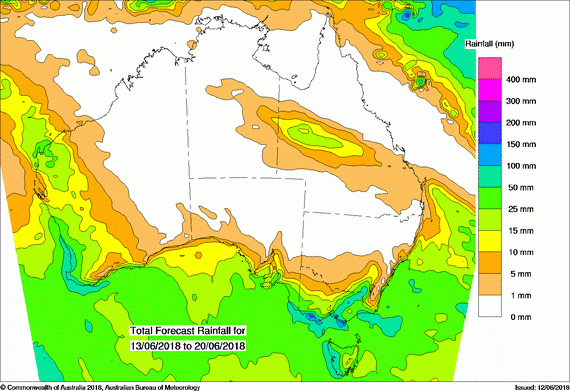Rainfall update 13 June 2018
The second week of June has provided follow-up rainfall for northern cropping areas, as well as western parts of the central cropping area. Far eastern and south-eastern parts of the grainbelt received lighter falls, as expected from the wind pattern. Deep low-pressure systems generated strong north-westerly winds. The week also brought winter-season rain to the Pilbara region from a cloud band.
Rainfall totals in the past week
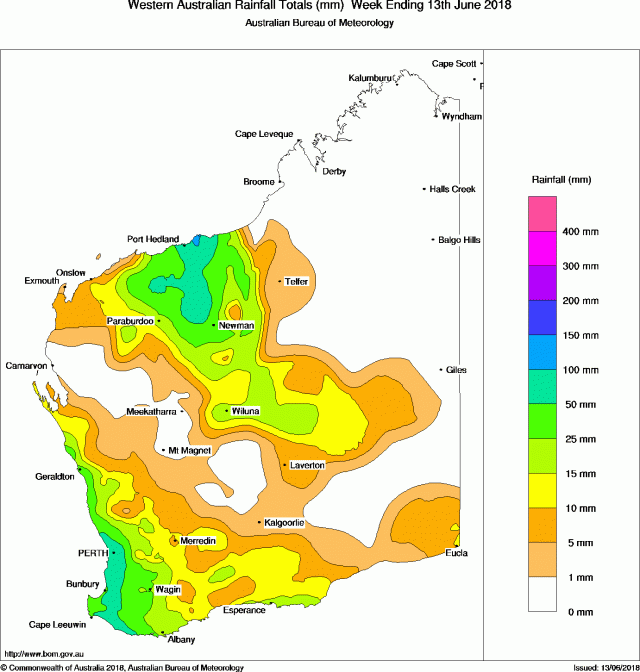
For more information refer to the Bureau of Meteorology's weekly rainfall table for the south-west.
Rainfall for the month to date
Western and southwestern locations have received good rainfall to date, though lighter falls have occurred over the south-eastern grainbelt. Gascoyne and Pilbara have had well above-average rainfall for the month to date, noting that this is a time of year when rainfall is usually low (Figure 2).
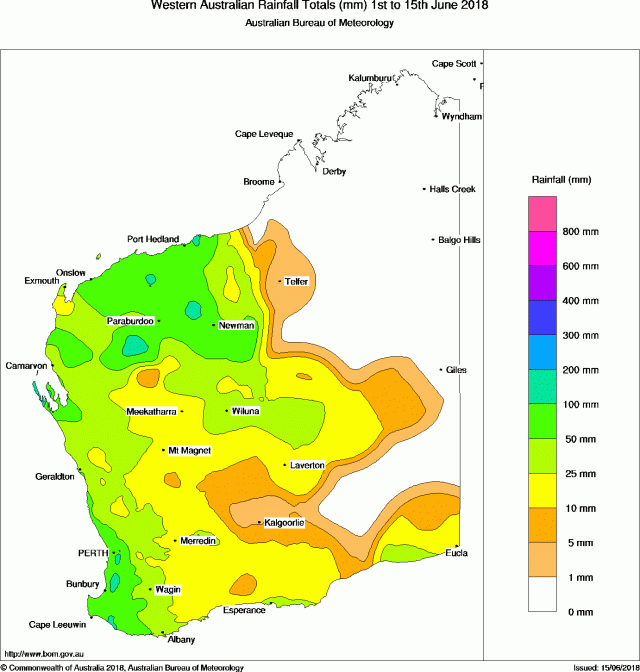
Monthly rainfall to date from DPIRD weather stations


Seasonal rainfall to date

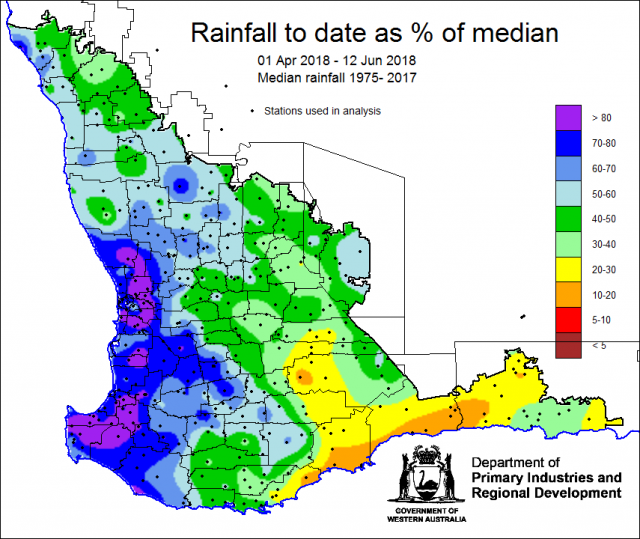
Soil moisture
Soil water storage has improved in northern and western cropping areas, while far-eastern cropping and south coast regions still have low storage. Figure 7 shows the estimated root zone soil water storage from the Bureau of Meteorology landscape model, as relative storage for the time of the year.

Low levels of soil water remain in the eastern and south-eastern grainbelt. Figure 8 shows the estimated fallow soil water storage to 12 June 2018.
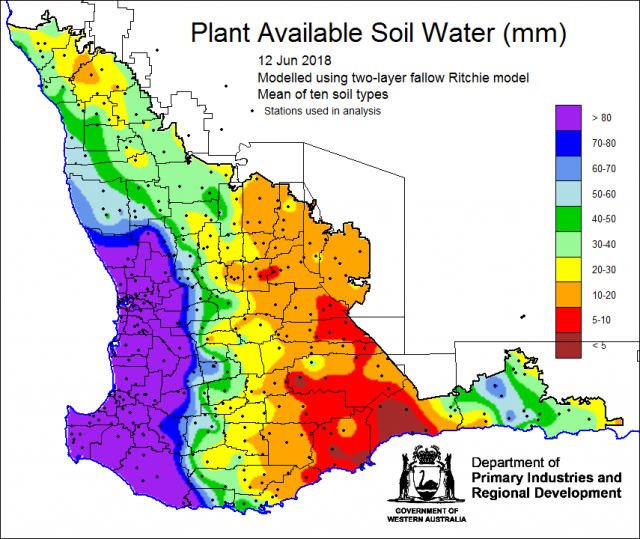
Rainfall forecast for the next week
Continuing rainfall is predicted for the week ending 20 June 2018 (Figure 9). A cold front is predicted to cross the WA coast on 18 and 19 June. A period of fine weather is expected after that. Note relatively lighter rainfall is predicted for eastern grainbelt and South Coast.
The ECMWF model is predicting a similar spatial pattern of rainfall over the coming week, with more rain for the Pilbara. Total predicted rainfall from the ECMWF model for the next 10 days is shown in Figure 10.
